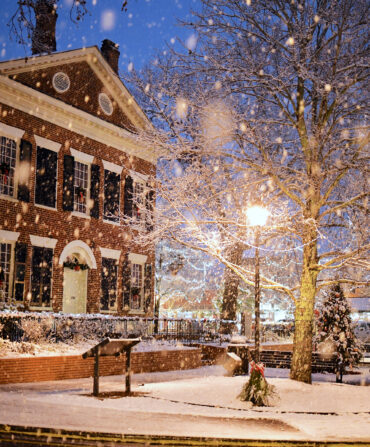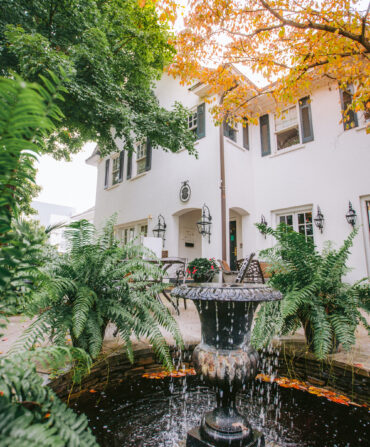I feel the fly rod load with the backcast. This is the moment that matters most, with the fish in view, its tail flashing above the turtle grass. I punch the rod forward, an act that seems to capture everything I love about the Florida Keys—the quest for solitude, the possibility of intimate connections with wild things, the immersion in a world of sand and sky and green mangrove and azure water.
Ooof. The masseuse’s practiced thumb somehow finds its way through the flute music sifting through the Little Palm Island spa and deep into a latissimus dorsi strung tight with stress. The jolt of pleasure-pain shuts my daydreaming off in midcast reverie. The imaginary fly never makes it to the bonefish.
I exhale deeply, sinking into the spa table. After a Keys small-craft advisory blew out my flats charter, I traded a 9-weight fly rod for a fluffy white robe and a couple’s massage with my wife, Julie. So for now I’m consoling myself by anticipating the benefits of turmeric, vanilla bean, and macadamia-nut-infused CBD oil. It’s not a bad fallback.
“How you doing over there, Jules?” I ask. Her contented sigh is muffled by a foot-deep meringue of comforters and spa towels. I center my thoughts and try to find my way back to that bonefish flat with a fly in midair. Instead, I think of a certain minty gin cocktail from last night’s beachfront dinner and wonder if it would be weird to show up at the Monkey Hut Lounge dressed in a spa robe and flip-flops.
Therein lies one of the innumerable beauties of Little Palm Island Resort & Spa: No matter what might conspire to juggle your schedule—such as a twenty-knot blow whitecapping the bonefish flats—plans B and C are quite likely as luxuriant and desirable as plan A. Located two miles off of Little Torch Key, accessible only by boat or floatplane, this is perhaps the most refined, intimate, and private resort in the entire Florida Keys archipelago. Devastated by Hurricane Irma in September 2017, the resort reopened in March after a multimillion-dollar effort to rebuild and rejuvenate the four-acre oasis. Owned and operated by Noble House Hotels & Resorts—whose two dozen luxury properties span North America—Little Palm Island includes thirty redesigned thatched-roof bungalow suites, the sumptuous SpaTerre, tiki-torch-lit beach dining, among other options, and enough diving, paddling, fishing, and adventure possibilities to sate reluctant relaxers like me. Crushed seashell paths wend under palms and gumbo-limbo trees. White ibis drink from the Zen garden’s freshwater flows.
The island that was once known as Little Munson has long morphed from personality to personality. It’s been a fishing camp, a smuggler’s retreat, a private hideaway, and even a training facility for Peace Corps workers. President Harry Truman fished here. It got its first shot of real fame in 1962, when Hollywood film scouts saw the soaring Jamaican palms over Little Munson and the neighboring Big Munson Island and brought their crews to film the World War II flick PT 109. Cliff Robertson played Lieutenant John F. Kennedy, with thirty Key West residents in face paint standing in as Solomon Island villagers. The movie received a lukewarm response, and the island didn’t impress, either. Newsweek called it “a palm-covered, gnat-ridden, mosquito-infested…sand dab, broiling under the sun amidst the tepid, shark-infested waters of the Florida coast.”

That “sand dab” took a decided turn in 1986, when Memphis businessman Ben Woodson, with a few partners, sank more than $8 million into building a South Pacific village–inflected compound of luxury bungalows on stilts. Little Palm became an ultraprivate retreat for celebrities and notables. Robert Wagner and Jill St. John honeymooned on the island. John McCain was a visitor. Noble House’s founder, Patrick Colee, bought Little Palm in 1995, polishing the resort into a rare combination of high-end amenities and blissful seclusion.
Situated on a curving mangrove-lined creek, our cottage overlooks lush sea grapes, the view framed with soaring palms. Double doors open all around for easy access to the salt breezes that ruffle the canopy bed. A tall-sided claw-foot copper tub anchors the bath. At night, we amble through the island gardens to the stunning Great House for dinner. Executive chef Daniel Ganem, who most recently ran the kitchens at the Betsy Hotel in Miami’s South Beach, calls his approach “a melting pot of South Florida influences,” with Cuban, Asian, Caribbean, and even Middle Eastern references. He’s discovered purveyors of mushrooms and microgreens in the Keys, and he’s insistent on elevating local farmers and seafood providers as Little Palm Island swings back into full speed.
I’d planned a high-energy itinerary for personal renewal: fishing, kayaking, snorkeling, paddleboarding, and working my way through the roster of tropically inspired cocktails. Julie quickly scouted out her own Little Palm to-do list: sunning on the comfy chaise on our private dock overlooking Big Munson Island, on the beach, or at the tropical-garden-surrounded pool. I mention the resort’s full gym, with its personal trainer at the ready. “Oh, darn,” she says, grinning. “I didn’t bring the right shoes.”
We soldier on with the footwear at hand. Kayaking along the mangrove creeks of Big Munson Island, we scatter glossy ibis and little blue herons from the treetops. Late one morning, we push off in one of Little Palm’s thirteen-foot Boston Whaler center consoles, one of the coolest amenities I’ve seen at a resort. Motoring north, past the low mangroves of undeveloped Hopkins and Cook Islands, we turn in to a remote cove of Big Pine Key with empty shorelines—much of Big Pine is part of the National Key Deer Refuge, set aside as a safe harbor for the diminutive subspecies. We throw out an anchor and two lines rigged with shrimp. It’s not long before I catch movement along the shoreline. Three Key deer emerge from the dense mangroves—a seven-point buck and two does—and wade from island to island in front of the boat.
It’s a perfect example of how Little Palm’s wild environs keep conspiring to interrupt our laid-back vibe. At lunch one early afternoon, under a shady umbrella equidistant from the pool and the tiki bar, I have a wedge of pita with hummus in hand when I see giant balls of mullet scattering across a sandbar seventy-five yards down the beach. Something is chasing them. Something big.
My fly rod is in our bungalow, strung and ready. I’m on my feet and already heading for the crushed shell pathway when I look back at Julie. She waves me off, doing her best not to move a single relaxed muscle.
This article appears in the June/July 2020 issue of Garden & Gun. Start your subscription here or give a gift subscription here.








